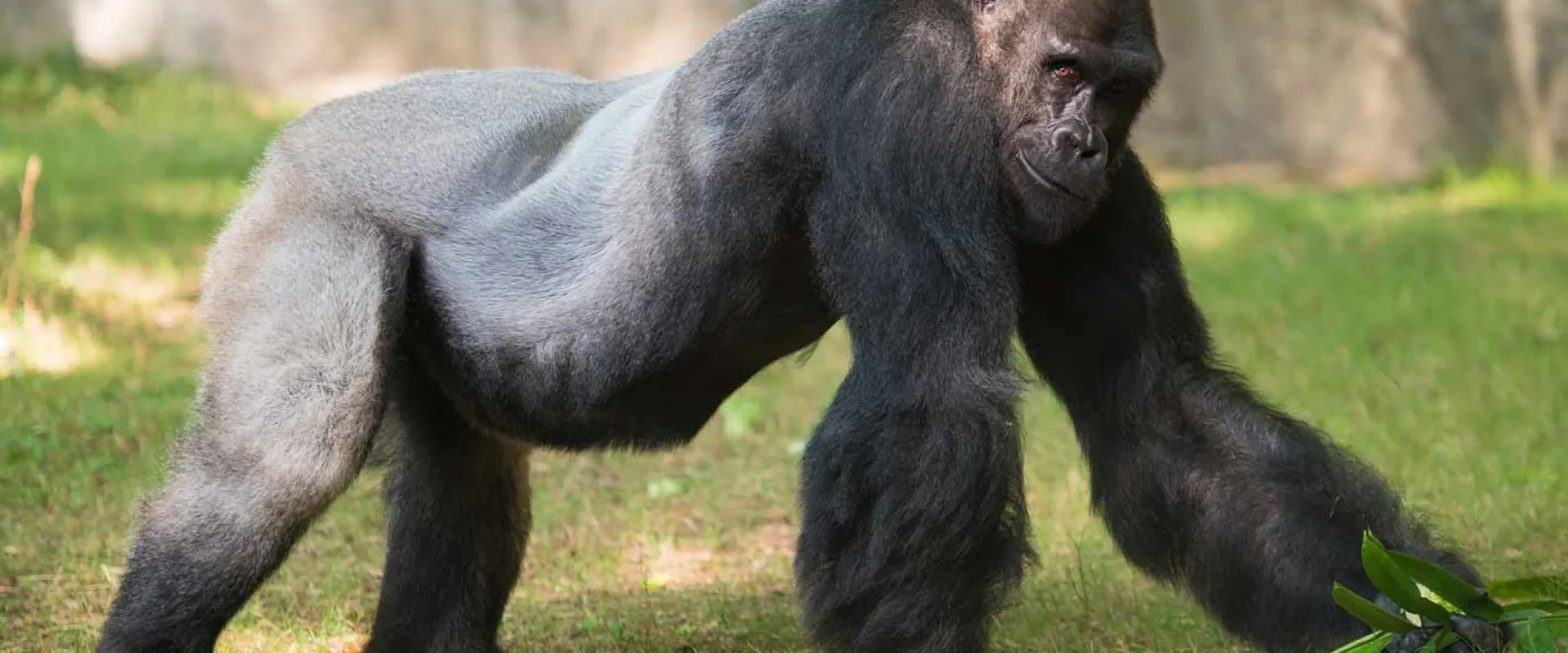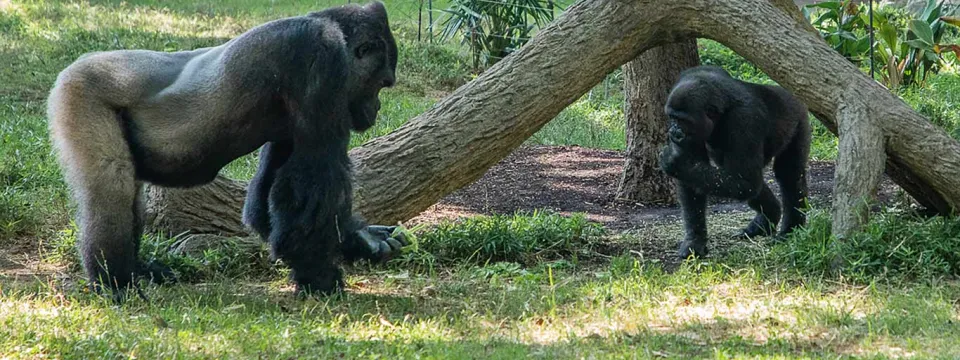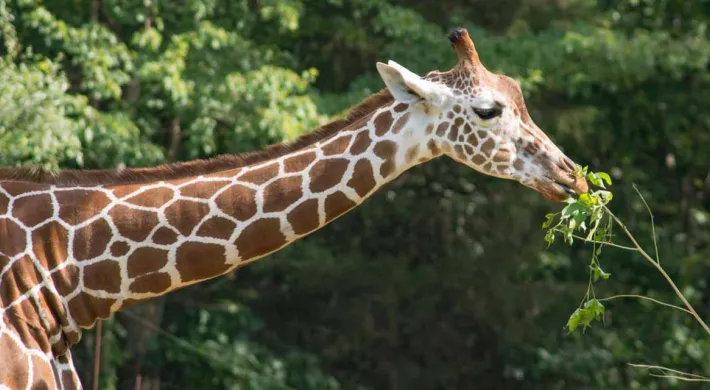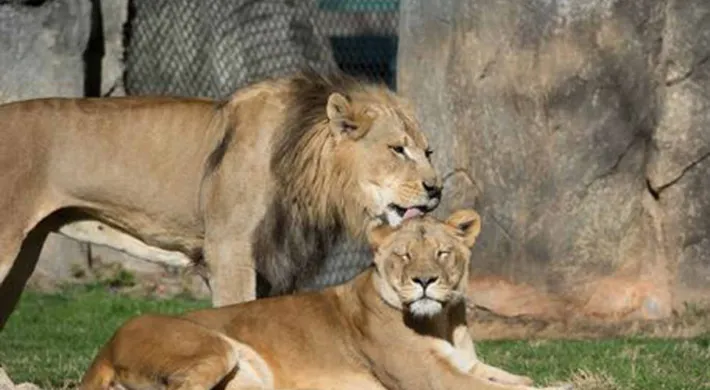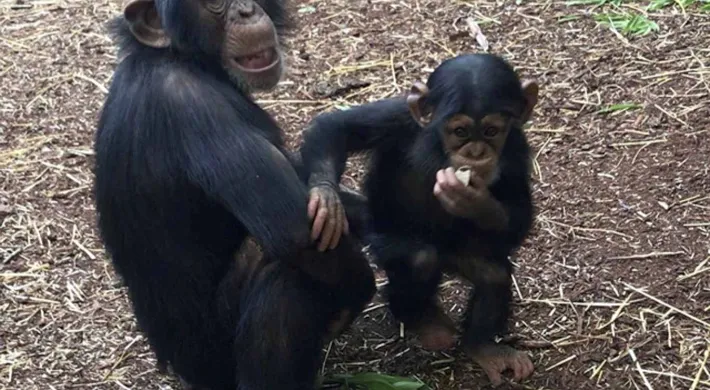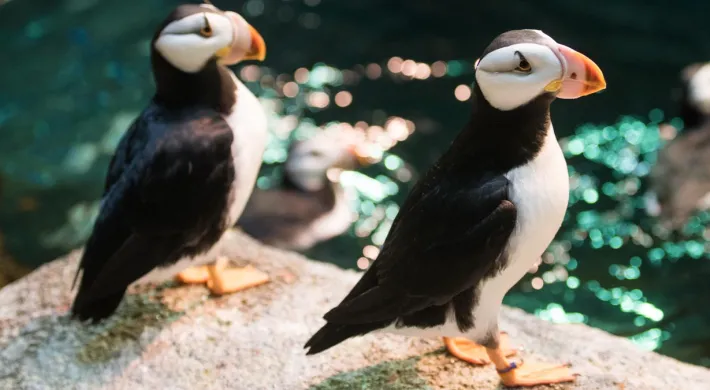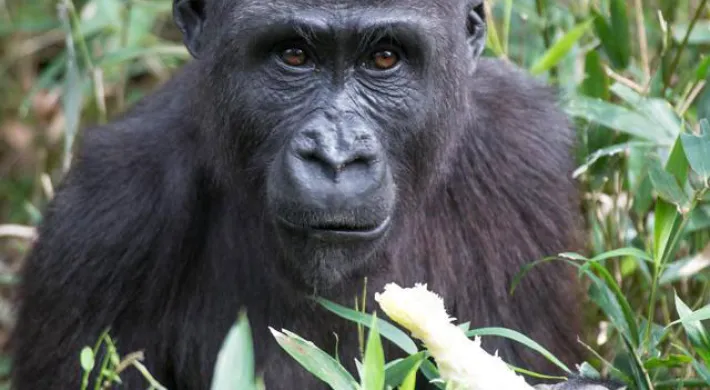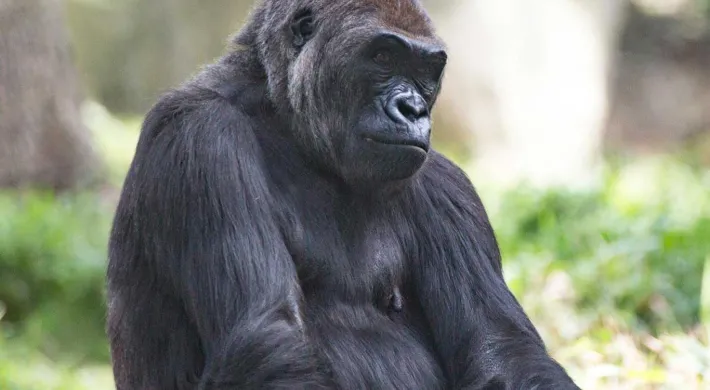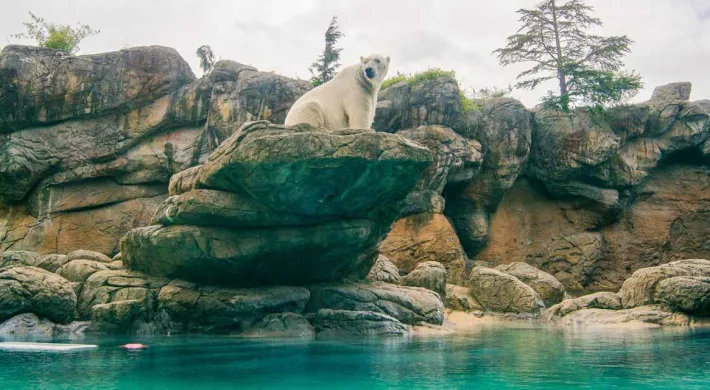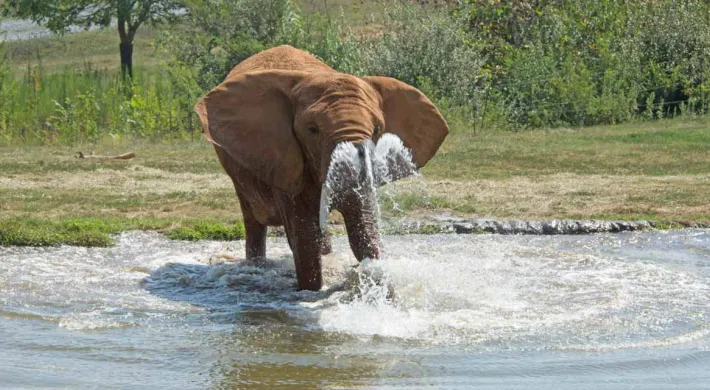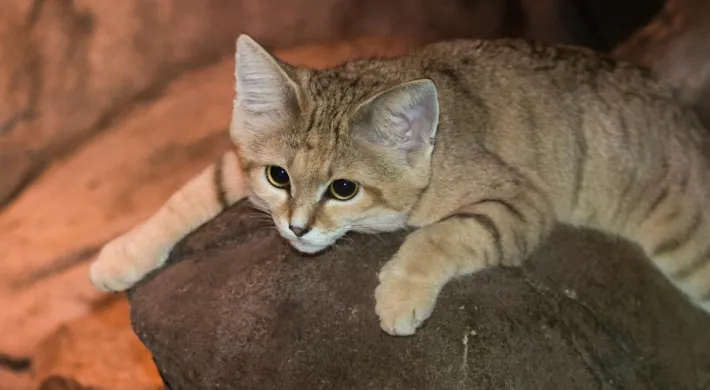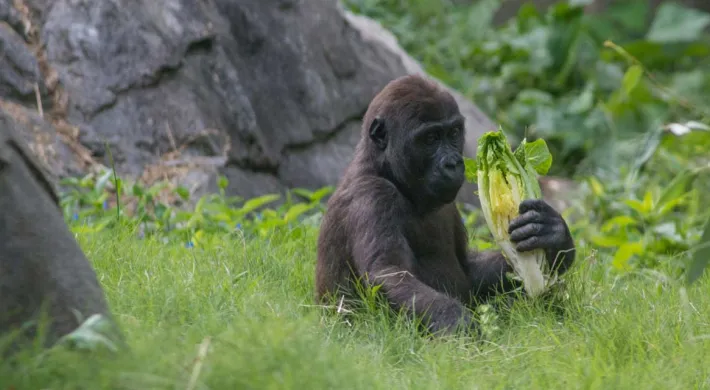Written by Rosie Edgerly, Animal Behavior Research Intern, North Carolina Zoo
My name is Rosie Edgerly, and I am an Animal Behavior Research Intern. My work focuses on contributing to a unique program adapted here at the North Carolina Zoo: adaptive management planning.
Adaptive management planning relies on creating care protocols for our animals that are rooted in research and are therefore evidence-based. More specifically, a step-by-step process is designed to assess and improve the wellbeing of animals in our care. First, carefully planned research projects enhance our understanding of an animal's activity throughout the day. We then analyze our findings to ascertain the effects of current management practices and identify ways to improve them. Finally, the information is incorporated into new management plans. The continued cycle of observing, collecting data, and re-evaluating care plans lends to the name: adaptive management planning!
As a research intern, through close mentorship with staff scientists, I am tasked with designing and implementing research projects that aim to improve the care of our animals. I have been lucky enough to have been assigned to focus my work on the North Carolina Zoo's Western lowland gorilla troop. Before we talk about gorilla behavior under human care, it's helpful to consider the behavior of those in the wild!
Wild western lowland gorillas live in groups with one dominant silverback male, two to five females, and their young, forming a social group called a "harem." Once youngsters reach maturity, though, both males and females will leave their homegroup. While females will join an established harem, males may start their own or join a "bachelor" group composed of only males. We currently house one silverback male, two adult females, and four adolescent boys.
So, based on what we know about wild gorillas, we can assume that as these boys age, they may become ready to either form a bachelor group or start a harem of their own. But how can we know when they are ready?
My research focuses on understanding the social dynamics of the four boys and the silverback. This informs the zoo management team on how all the males are getting along and provides the necessary insight into their development. Most of my work involves observing the gorillas for a full day and taking very detailed notes on their behaviors. I identify affiliative behaviors or friendly interactions and agonistic or unfriendly behaviors. These interactions will tell us about their friendships, hierarchies, and day-to-day social lives.
Let's get to know our males a bit more!
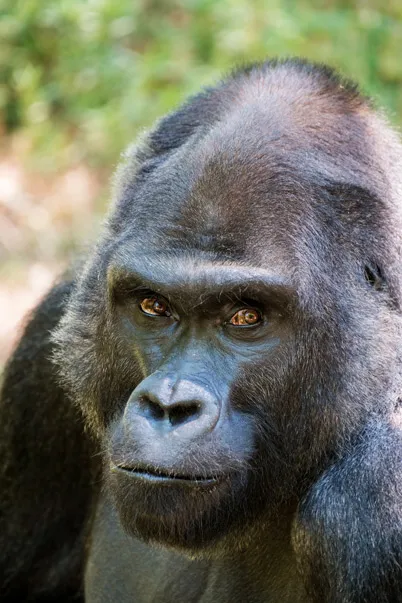
Mosuba is the silverback of our troop (Figure 1). At the age of 38, he is a calm and gentle silverback but can be very serious. He keeps a close eye on the rest of the troop, and the four young boys can be a handful, just like adolescent human boys!
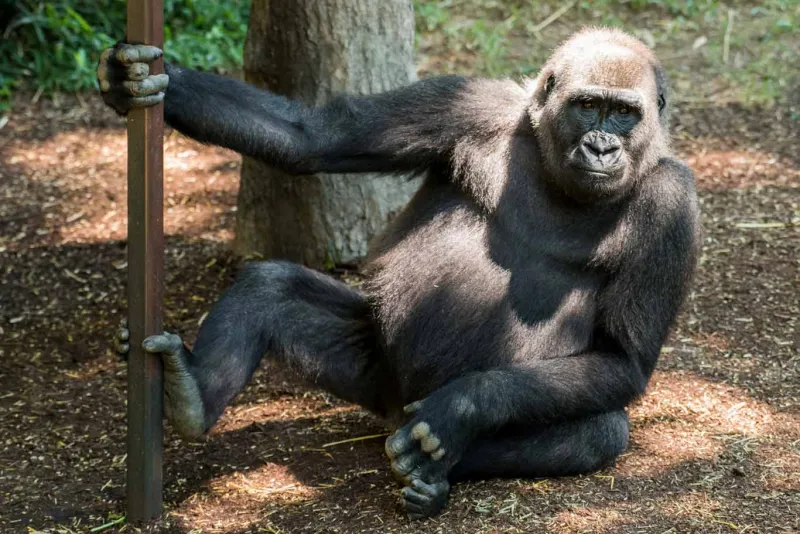
The oldest of four is Hadari, age 12 (Figure 2).
Male western lowland gorillas mature into silverbacks around age 15, so Hadari is getting close! Mosuba can be very wary of Hadari's presence since Hadari is starting to look more like a silverback than a juvenile.
Apollo, Bomassa, and Dembe, all age 9, are the last of the boys (Figure 3)!
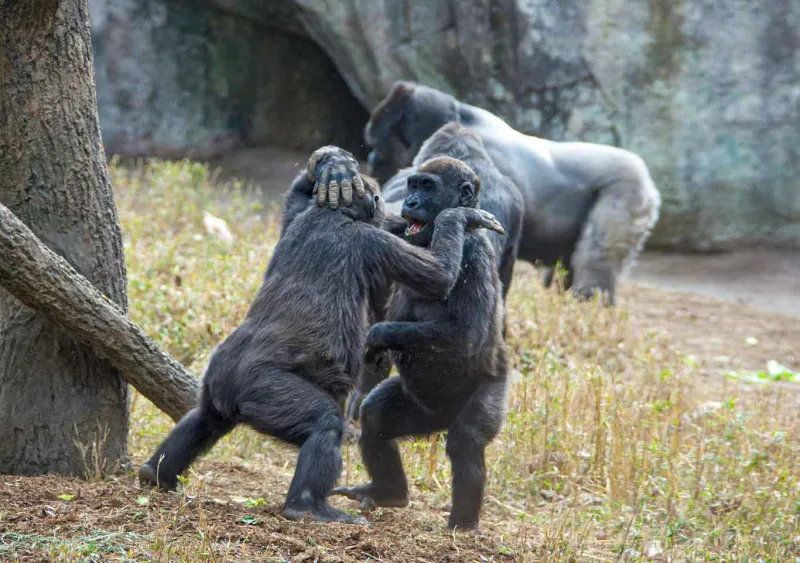
(Figure 3) Apollo has a bold personality and is used to getting his way. His half-brother, Bomassa, is rambunctious like Apollo but a tad gentler.
Dembe is the shy sweetheart (Figure 4) pictured below. He can get a little scared when Apollo plays too rough with him, and Bomassa's even temperament is more suited for associating with Dembe.
To date, my data show a strong friendship between the three youngest boys: Apollo, Bomassa, and Dembe. Dembe and Bomassa have the strongest relationship; in human terms, they are best friends.
They spend much of their time playing, huddling, and can be found resting near one another all day. These are the three strongest indicators of friendship among western lowland gorillas. The data also confirm Mosuba is still dominant despite the boys maturing. It is also apparent that Hadari is the lowest ranking male, as he spends a good deal of his time away from Mosuba. Beyond this information giving our animal care team insight into our male gorillas' dynamics, it can also contribute to a more extensive understanding of how young males socialize as they mature.
I have enjoyed my time watching this fun troop! The best part of studying the gorillas is getting to know them as individuals. Much like humans, they have different personalities, interests, and attributes. I can't wait to see what's next for this exciting and entertaining troop!
